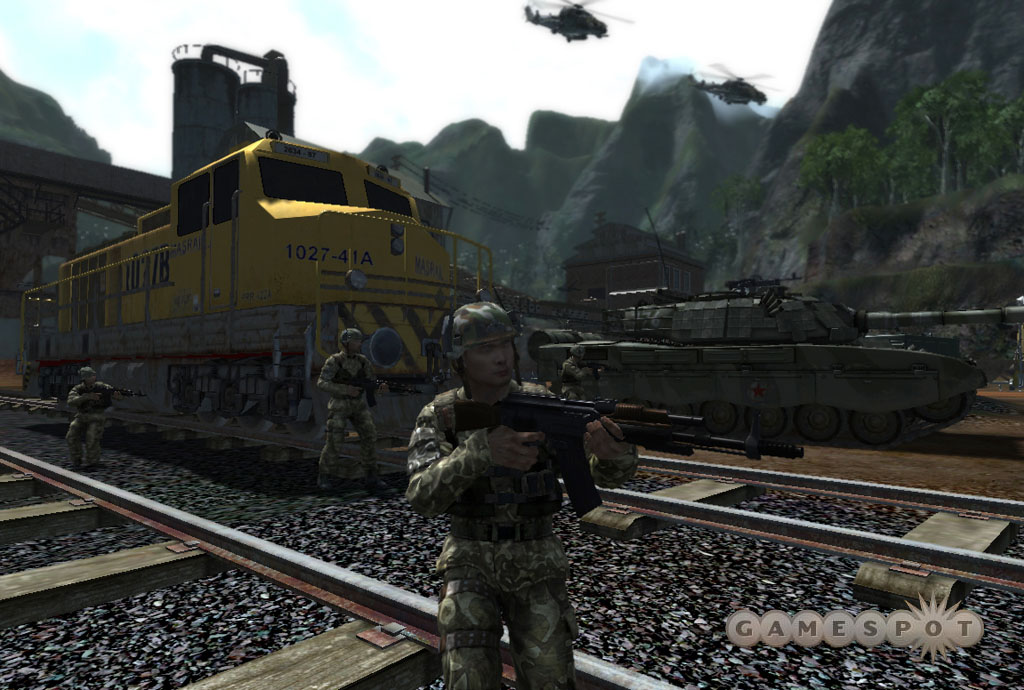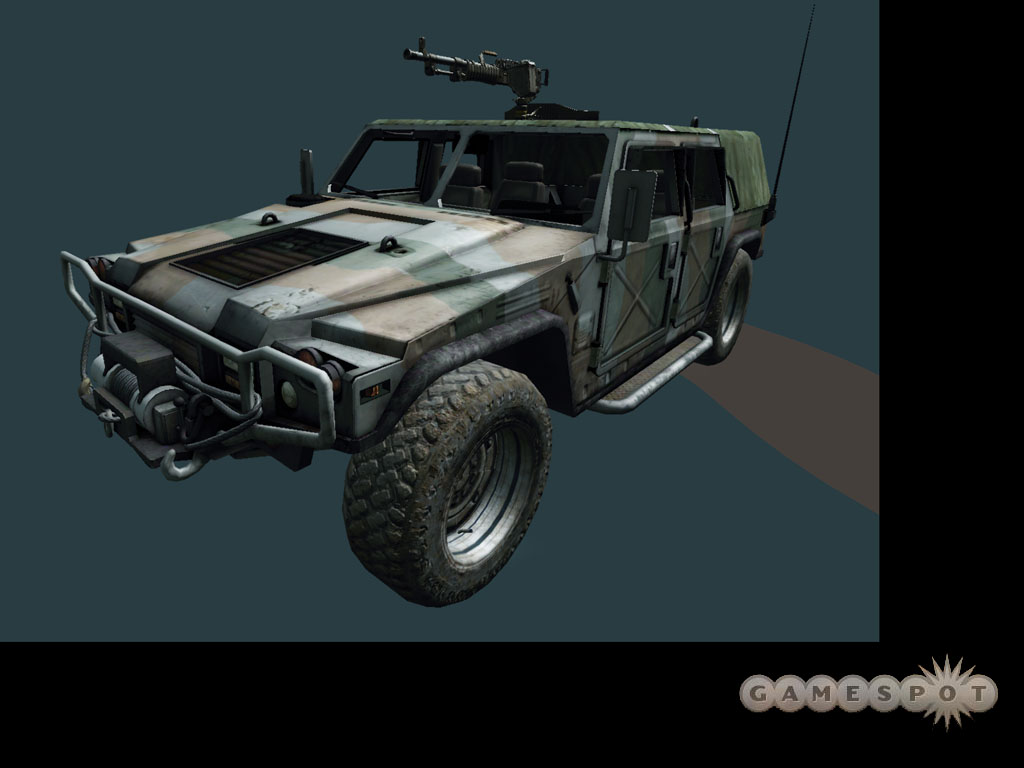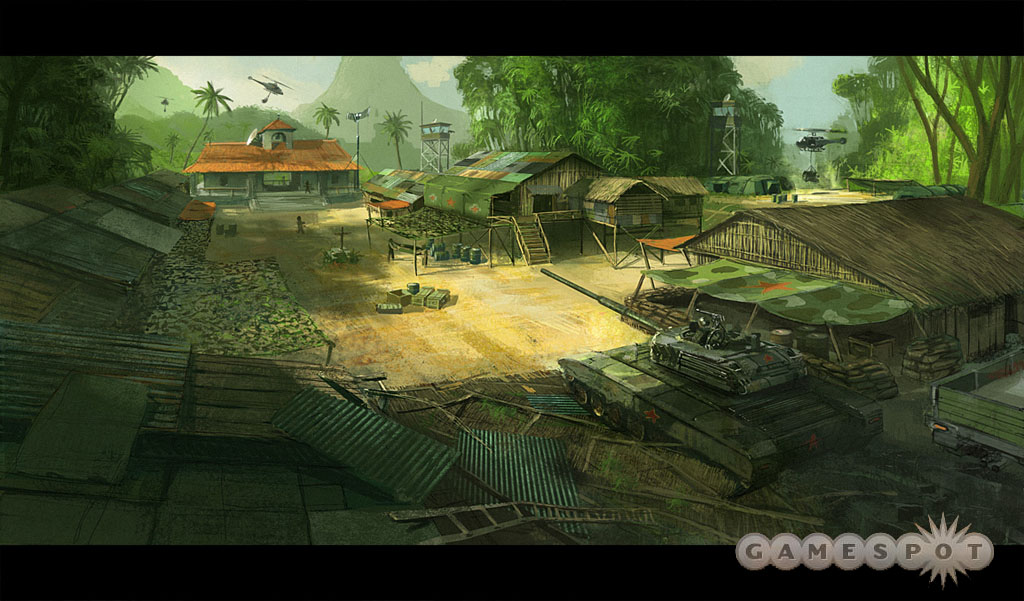Crysis Exclusive Preview - Technology and the Hardware That You'll Need to Run the Game
We get an early look at the many amazing technologies going into this cutting-edge action game, as well as an idea of what kind of PC hardware you'll need.
Perhaps the most common question revolving around Crysis isn't when this eagerly awaited first-person shooter is going to ship or even whether it will appear on the Xbox 360 and the PlayStation 3. Instead, gamers everywhere are wondering what sort of PC they'll need to run the game. And it's not hard to understand why Crysis has everyone thinking about hardware upgrades. Ever since it was revealed at the Game Developers Conference, gamers have been amazed by the cutting-edge visuals in Crysis. So when we recently visited developer Crytek's offices in Frankfurt, Germany, we got a chance to find out more about the game's technology, as well as what kind of machine you'll need to run the game.

Crysis will be Crytek's second game, after 2004's acclaimed Far Cry, and the company is aiming to ratchet up its storytelling, as well as its technologies. The story revolves around an alien invasion of Earth, with the end of humanity as we know it hanging in the balance. This is a far cry from Far Cry's tale of science run amok on a remote tropical island. Still, Crysis does feature a tropical island, and it serves as the setting for the game. After a mysterious meteor crashes on the island, your special forces team is deployed to investigate. However, the North Koreans have arrived first, so you'll battle not only them but also the aliens, once the extraterrestrial threat is revealed. The early screenshots and videos of Crysis are no doubt impressive and, in some ways, jaw dropping. They show combat taking place in an incredibly realized tropical paradise. More importantly, the videos show things that have never been seen before in a game, such as how the individual leaves of a plant will bend if someone or something passes by. "We tried to make everything more cinematic and more realistic," said Cevat Yerli, Crytek president and CEO.
Crytek has always been a company on the cutting edge. As we noted in our prior preview, Crytek's roots are in developing one of the first tech demos for Nvidia's GeForce graphics cards, and the company has been working with shaders and other advanced graphics features as long as anyone in the industry. Yet just as important is how the development team works together to solve technical and artistic issues.
"Our technology team works very closely with our production team, so they are not only aware of what the future is, but they all understand what is the real dilemma of pipelines, tools, and production issues," Yerli said. For example, members of the technology team are often assigned temporarily to the production side of the office, where they can work closely together to solve issues that crop up during development. The company also does a lot of internal training, workshops, tutorials, and videos to get everyone up to speed on the latest technology. "Technology is one thing," Yerli said, "but to get the team to understand technology is another."
Crysis will let Crytek show off everything that it's been working on over the past two years. The game will feature not only state-of-the-art graphics, but also advanced physics, animation, lighting, and more. A lot of the technology incorporated into Crysis is aimed at increasing the cinematic nature of the experience, as well as creating more realistic gameplay. For instance, with deformable vegetation, it will be possible to see leaves bend and sway. The movement of foliage in the distance may reveal an otherwise undetected enemy. All objects will have physical properties that can change drastically throughout the story. The tropical jungle, for instance, will flash freeze, and suddenly everything in the frozen environment will shatter apart.
Yerli explained the full range of visual tools that Crytek is working with. Crysis' camera technology will make extensive use of motion blur, so if you spin around quickly to face an enemy, the images onscreen will blur. The lighting system makes use of depth of field so that if you focus on an object nearby, objects in the distance will blur. The game uses a new indirect lighting system that tries to model the way light and color react in the real world. Lights will "bounce" off of colors and interact to create more lifelike lighting conditions. And, of course, Crysis will take advantage of high dynamic range lighting to create more realistic light, in general.
Crytek will do something very interesting with color, as well. "We manipulate color depending on the intensity," Yerli said. So if you're in an action-packed situation, the colors in the game may become grittier or more saturated to reflect that adrenalin is flowing through your system and your senses are more alive.

Yerli was able to give us an idea of what kind of hardware Crysis will support. Keep in mind that these are by no means the official requirements, as the game is still in development. Still, this gives us an idea of what kind of technologies the game will take advantage of, and it may give you an idea of where you currently stand in terms of being able to run the game.
"Crysis will feature out-of-the-box 32-bit, 64-bit, DirectX 9, DirectX 10, and multithreading support," he said. That's a lot of technical jargon, so we'll go over each point one by one. The important thing to keep in mind is that you won't have to worry about configuring all of these settings when you install the game, as Crysis will automatically configure itself based on what kind of hardware you have.
Crysis Under the Hood
DirectX is Microsoft's application programming interface for games. That's a fancy way of saying that DirectX basically lets game developers easily take advantage of the latest developments in graphics technology. Most gamers will play Crysis using DirectX 9 video cards, since DX 9 has been the standard for several years and there is a wide install base of DirectX 9-capable video cards. If you have an older video card that doesn't support DirectX 9, though, it looks like you are going to need to upgrade, as Yerli said that the game will require a DirectX 9 graphics card with support for shader model 2.0. (Shaders are basically programmable instructions in the graphics card that help determine the visual qualities of an image.) 
Since DirectX 10 cards didn't exist in May, the Crysis demo at the Electronic Entertainment Expo was actually running on DirectX 9 video cards, which is a good indication of what sorts of visuals you'll get with current hardware. "The E3 demo was all about DX 9 shader model 2.0--there was no more technology than this," Yerli said. He also addressed some of the controversy around the E3 demo. While visually amazing, the frame rate struggled quite a bit throughout the demo. However, he noted that Crysis was running on dual graphics-processor-unit systems, while most other PC games at the show were running on quad GPU systems. Still, we can expect performance on DirectX 9 cards to be smoother once the game is finished and optimized.
Of course, if you want the game to look the absolute finest, you'll need DirectX 10 hardware. It's a bit hard to get DirectX 10 cards right now, though, since they're not on the market, but the first cards should be out by the time Crysis ships. What sort of difference will DirectX 10 provide? Judging from what we've seen, DirectX 10 visuals elevate the graphics from beautiful to absolutely cutting edge. Subtle effects that really help immerse you into the game's world are only really possible with DirectX 10. However, to take advantage of DirectX 10, you'll also need Windows Vista, the long-awaited successor to Windows XP. That's due to the fact that the DirectX 10 API will only be released with Windows Vista, since Microsoft has basically rewritten the decade-old DirectX technology from scratch to take advantage of Vista's new driver model.
What's interesting is that Yerli told us that if you have Windows Vista and an older DirectX 9 card, you should still see better performance with Windows Vista than Windows XP, even if the hardware remains unchanged. "DirectX 9 on Vista will run faster throughout due to the better device driver model...which is a great thing because just upgrading the operating system on the same rig, you get a better gaming experience," he said.
In addition to your graphics card, Crysis will most likely make maximum work out of whatever CPU you have. The game will run fine on current, single-core CPUs, but it will take advantage of the latest multicore CPUs, as well. Yes, that means Crysis is multithreaded, which means that it can make maximum use out of dual-core systems. Where's all that processing power going? Well, part of the CPU's time will be taken up by Crytek's proprietary physics engine (called CryPhysics, of course), and it's the reason why you'll be able to saw apart trees with gunfire and why vegetation will bend and deform when someone passes by--or when the force of explosions blow them back.
Crysis will also take advantage of 64-bit CPUs. Crytek has had experience working with new technology, since it released a patch for Far Cry last year to take advantage of the new 64-bit processors from AMD and Intel. However, while 64-bit usually doesn't bring any measurable performance increase in games (most games just take advantage of 64-bit's larger memory space), it appears that it will provide better performance in Crysis. According to Yerli, the 64-bit version "will bring a performance difference of up to 10 to 15 percent on each thread" compared to the 32-bit version.

Put this all together, and it makes sense that if you want the ultimate Crysis experience, you'll need hardware that's not even available today. However, Yerli explained that Crytek's philosophy is to make sure that existing systems aren't left far behind. "The rule of development of Crysis has been by the time we ship, the game will scale back two years," he said. So, when the game is released, you might want to examine your machine and figure out if any of the components are older than two years. If so, you'll probably want to upgrade them.
All this new technology is daunting, but it seems fitting, as well. Microsoft chose to show off Crysis during its E3 press conference for a reason. Crysis will help usher in a new wave of PC gaming with its DirectX 10 support, but it doesn't forget about today's gamers and their hardware. This promises to be a game that you will want to show off to your friends when it ships sometime this winter.
Got a news tip or want to contact us directly? Email news@gamespot.com
Join the conversation